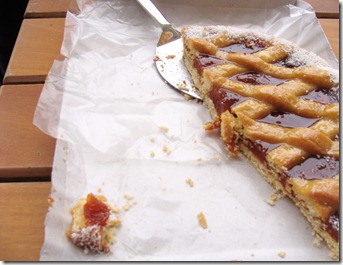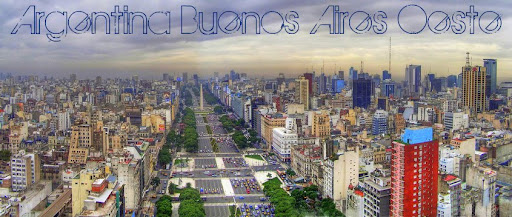Some years before, the British had their eye on the port city, since it had been steadily growing in importance from the revenues of the lucrative ranching and leather industry in the Argentine pampas. In 1806-1807, the British forces made a determined effort to capture Buenos Aires. Spain, with its resources drained, was unable to send any help, and the citizens were forced to fight off the British on their own. This led many to question their loyalties to Spain. In their eyes, Spain took their taxes but did not hold up their end of the bargain when it came to defense. In May of 1810, word reached Buenos Aires that the King of Spain, Ferdinand VII, had been deposed by Napoléon Bonaparte.
 A meeting was arranged to discuss the situation and the opportunity for changing the political power structure in Buenos Aires. It took place in the town hall or cabildo. Many people demonstrated their discontent in the Plaza de la Victoria. (This plaza would later become the Plaza de Mayo.) They affirmed the need for self-governance in light of the ongoing upheaval in Spain. This open town hall meeting was called the Cabildo Abierto.The affirmation was that the Viceroyalty was invalid since King Ferdinand, who had appointed the Viceroyalty, was not currently in power.
A meeting was arranged to discuss the situation and the opportunity for changing the political power structure in Buenos Aires. It took place in the town hall or cabildo. Many people demonstrated their discontent in the Plaza de la Victoria. (This plaza would later become the Plaza de Mayo.) They affirmed the need for self-governance in light of the ongoing upheaval in Spain. This open town hall meeting was called the Cabildo Abierto.The affirmation was that the Viceroyalty was invalid since King Ferdinand, who had appointed the Viceroyalty, was not currently in power. In 1814 Ferdinand VII was restored to his throne in Spain, but by then Argentina had seen enough of Spanish rule. On July 9, 1816, Argentina formally declared independence from Spain and was able to defeat Spain's attempts to retake it.

The historical events in the week leading up to May 25th are celebrated collectively as “la Semana de Mayo,” or May Week. This is due to the fact that the May Revolution took place within a week. Although the majority of significant events began on May 18th, the culmination of the May Revolution on May 25th is the day on which the commemorative festivities are held each year, and the event is celebrated on that date where ever it falls in the week.
 There is a legend that as the new government was proclaimed, the sun broke through the clouds, which was seen as a good omen. For this reason, it is featured on the Argentine flag.
There is a legend that as the new government was proclaimed, the sun broke through the clouds, which was seen as a good omen. For this reason, it is featured on the Argentine flag.The sun, called the Sun of May in Argentina because of the revolution, is a representation of the Inca sun god, Inti. It features 32 rays, 16 undulated and 16 straight in alternation,usually depicted with a fac. The alternating straight and wavy rays represent light and heat.
Argentinians are likely to celebrate the national holiday by spending time with family, and eating locro. The origins of this tradition are not well-documented. One possible explanation is that the Argentines wanted to do so with a food that was typical to the area (in other words, not originating from Spain.) Locro is actually from the indigenous people of Argentina. It is popular in the countries that lie along the Andes Mountains. In Argentina, locro is not only a food, but also a custom. It is normally made with several different kinds of meat, but I made a vegetarian version. All of the the ingredients, I found grouped together in the produce section of my local grocery store: white beans, dried white corn, zapallitos, which are a zucchini-like vegetable, only I think it tastes better ;) potatoes, onion, garlic and squash. After the beans and corn are soaked and softened, you mix everything together with herbs and liquid like a regular soup and cook it forever, like 8 hours, and since mine is still cooking, I am including a final product picture from online.

A typical dessert to celebrate the holiday is Pasta Frola. Like many classic Argentinean recipes, is Italian in origin. It refers specifically to a cake with a crust that is filled with quince jam or quince paste. (It can also be made using sweet-potato jam.) Pasta Frola is found in bakeries and in everyone's mother's kitchen. I promised the missionaries I would put a recipe on the blog, even though I bought mine at the local bakery.

1 cup flour
1/2 cup sugar
1 teaspoon baking powder
1 teaspoon baking soda
1/2 stick butter, softened
1 egg
2-3 tablespoons of milk
quince paste or quince jam (or the jam of your choice)
Pre-heat the oven to 350 degrees Fahrenheit. Butter and flour your pan-this recipe makes enough for a small square or rectangular pan, though the photos show small ramekins, which is also fine. Mix together the flour, sugar, baking soda and baking powder. Cut the butter in, mixing between your fingers to incorporate the flour mixture and the butter. Keep mixing until it's uniform and resembles coarse sand. Add the egg and 2 tablespoons of the milk and mix together until you get a ball of dough that is uniform. It should not be too dry (crumbling apart) and should not be sticky. Roll out the dough onto a floured surface. The dough should be about half an inch think. Cut the dough and put it in to the pan. It should cover the bottom and go up on the sides only a little bit. Pat the dough down around the edges with the back of your fingers. Take a few spoonfuls of quince jam and spread it over the dough in the pan. I have found that it's easier to mash the jam in a bowl with a fork so that it's easier to spread. Also, if using quince paste, you may need to add some warm water to soften the paste texture. Roll out the dough scraps and cut into strips with a pastry cutter or knife. Lay across the top of the jam and dough in a lattice (criss-cross) pattern. Pop into the oven for a very short time-only about 20 minutes. It should be slightly browned on the top.
El 25 de Mayo es conocido como el Día de la Revolución de Mayo. Mas específicamente marca el evento cuando los Argentinos locales empezaron a gobernar Buenos Aires en lugar de España en 1810.
Algunos anos antes la gente de Inglaterra estuvo mirando la ciudad porque fue creciendo en importancia por medio de sus éxitos financieros de campo y cuero en las pampas de Argentina. En 1806'1807, los esfuerzos de Inglaterra hicieron una guerra para conquistar Buenos Aires. España, sin la habilidad de ayudarles tuvo que luchar solamente con sus propios esfuerzos. A continuación muchos de ellos empezaron a cuestionar su lealtad a España. En sus ojos, España saco su dinero pero no hizo nada por eso. En Mayo de 1810 la gente de Buenos Aires supo que el Rey de España, Fernando VII perdió su corona de Napoleon Bonaparte.
Una reunión fue llamada para discutir la situación y la oportunidad para cambiar la estructura de poder político en Buenos Aires. Fue en el cabildo. Mucho gente mostró sus males sentimientos en la Plaza de la Victoria. Ahora la plaza se llama La Plaza de Mayo. Ellos estuvieron de acuerdo con la necesidad de tener su propio gobierno debido al conocimiento de los problemas en el gobierno de España. Esta reunión es conocida com Cabildo Abierto. Ellos decidieron que su gobierno no fue valido porque el Rey Fernando no tuvo poder.
En 1814 Fernando recibió su corona otra vez pero ya los Argentinos no querían su mano. El 9 de Julio 1816, Argentina declaro su independencia en una manera formal y gano sobre España en sus esfuerzos de tomar la ciudad otra vez.
Los eventos históricas son en la semana antes de 25 de Mayo son celebrados juntos com la semana de Mayo. Eso es por el hecho de que la revolución duro en una semana. Aunque la mayoría de los eventos importantes empezaron el 18 de Mayo, con la culminación de la revolución de Mayo el 25, el ultimo es el día en el cual se celebra cada ano y el evento esta se celebra esa fecha no importa el día de la semana.
Hay un cuento folklórico que cuando el gobierno nuevo fue anunciado el sol vino de atrás de las nubes y fue un buen presagio. Por esa razón tiene un lugar importante en la bandera.
El sol, llamado el Sol de Mayo en Argentina porque de la revolución es una representación Inca del dios de sol y se llama Inti. Tiene 32 rayos, 16 ondulados y 16 rectos alternados y normalmente con una cara. Los rayos representan luz y calor.
A los Argentinos les gusta celebrar el feriado nacional con su familia y comiendo locro. Nadie sabe exactamente el origen de esta tradición. Tal vez ellos quieren come algo típico de su país, en otras palabras, no quieren come algo de España. Actualmente, el locro es del pueblo indígena de Argentina. Es muy popular en los países cerca de los Andes. Pero, en Argentina, el locro no es solamente una comida, es una costumbre.
Normalmente tiene algún tipo de carne, pero yo hice una versión vegetariana. Todos los ingredientes los encontré untos con las verduras en el supermercadoÑ porotos pallares, maíz blanco, zapallitos, papas, cebollas, ajo y calabaza. Después de los porotos y maíz están suaves de agua, mezcla todos con hierbas y liquido como una sopa normal y cocinar para siempre, como 8 horas, y porque mi propia sopa todavía esta cocinando, voy a incluir una foto de producto listo de internet.
Un postre típico para el feriado es Pasta Frolla. Como muchas recetas Argentinas, es de Italia. En realidad es una torta con membrillo. Puede hacerlo con batata también. Puede encontrarla en las panaderías y en la cocina de la madre de todos. Prometí a los misioneros voy a escribir la receta en el blog aunque yo la compre en la panadería local.

No comments:
Post a Comment